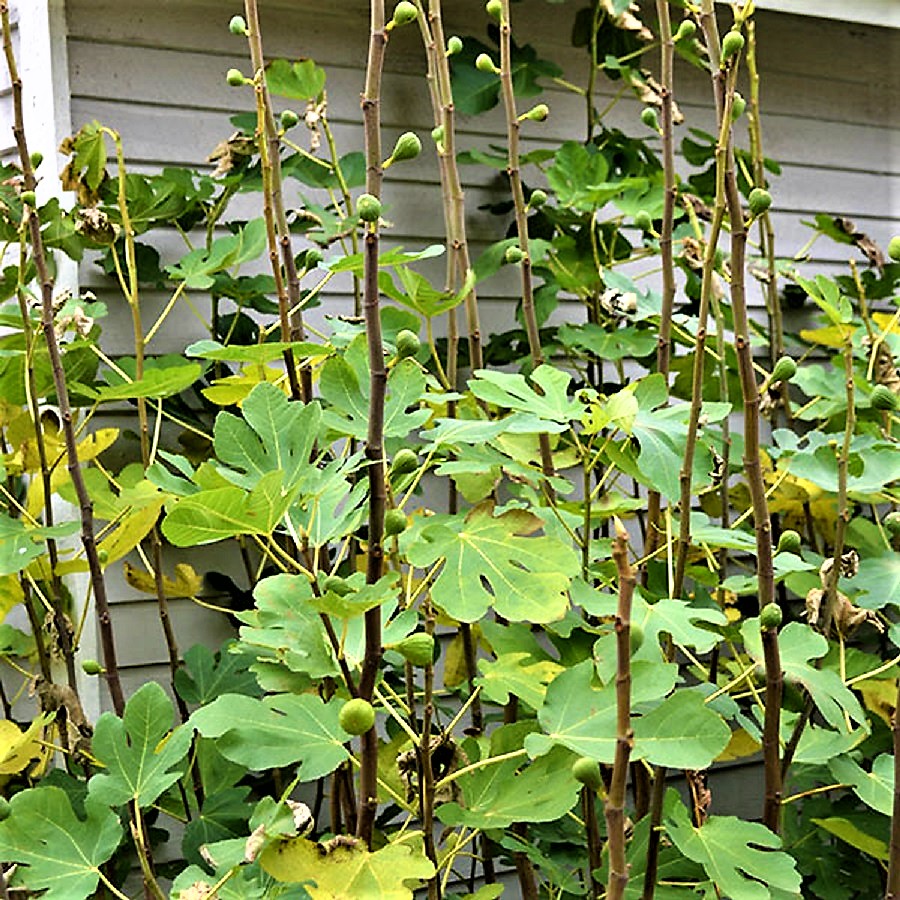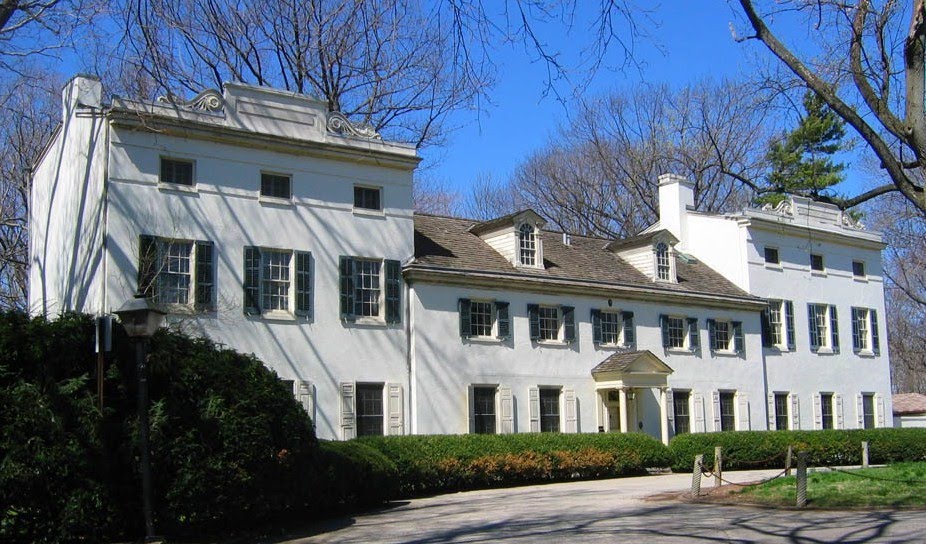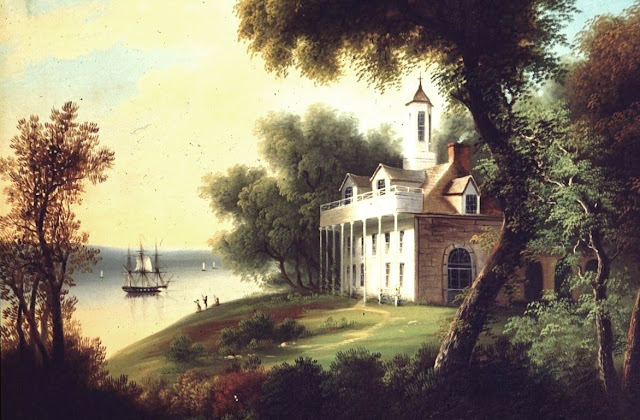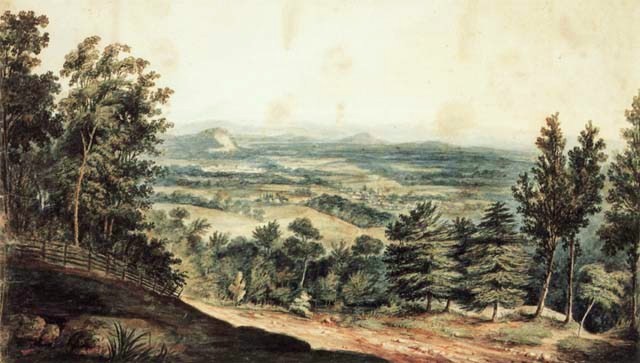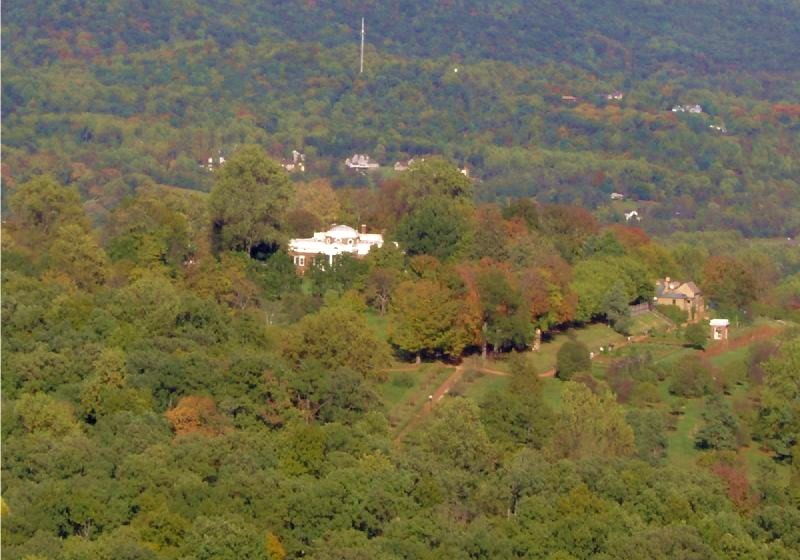The problems with planting and harvesting herbs and vegetables were the same for both groups of gardeners; and of course, the slaves knew the challenges well, since they planted and maintained the gardens of their masters. Nature makes no class distinctions. It would be relatively easy to save the seeds for annuals, just as they did for their masters year to year. The wealthy landowner would have his slaves build a wall or intricate fence around his plantation's kitchen garden to keep deer and other interlopers at bay, and his slaves would need to find a way to do the same.
Permitting slaves to independently raise produce, and even livestock, was not new in the 18C Chesapeake. Earlier in 17C Virginia, s
 ome masters had allowed their slaves to grow tobacco, corn, horses, hogs, and cattle and to sell them to gain enough money to buy their freedom and the freedom of their wives and children. Sensing that this was a serious threat to their labor pool, in 1692, the Virginia General Assembly ordered slave owners to confiscate "all horses, cattle and hoggs marked of any negro or other slaves marked, or by any slave kept."
ome masters had allowed their slaves to grow tobacco, corn, horses, hogs, and cattle and to sell them to gain enough money to buy their freedom and the freedom of their wives and children. Sensing that this was a serious threat to their labor pool, in 1692, the Virginia General Assembly ordered slave owners to confiscate "all horses, cattle and hoggs marked of any negro or other slaves marked, or by any slave kept."Apparently the practice of allowing independent garden plots had begun again in the first half of the 18C or earlier. In 1732, traveller Hugh Grove noted Virginia slaves planting "little Plats for potatoes or Indian pease and Cimnells."
Cimnells were small squash. In addition to field peas and squash, Chesapeake slaves also planted potatoes, beans, onions, and collards. All these crops could be eaten raw, boiled in an old pot, or roasted in the coals of a small fire. Over winter, the slaves could store some of their produce inconspicuously in the ground, banking them just like they d
 id for the master.
id for the master.In the warmer climate of South Carolina, slaves were growing more familiar heat-loving varieties of vegetables. In the 1720s, Mark Catesby recorded a new variety of yam in South Carolina, calling it, "a welcome improvement among the Negroes," who were "delighted with all their African food, particularly this, which a great part of Africa subsists on." Slaves in the Lowcountry could grow tania roots, millet, sorghum, sesame, peppers, and okra in addition to the traditional colonial vegetables.
In the Chesapeake, those with larger plots might attempt to grow mellons and corn, which required more room to grow and would certainly draw more attention from the gentry; something that might be considered risky by a group of people trying to maintain a low profile just to survive. A good slave did what he was told and kept his mouth shut. The slave might appreciate the autonomy a little patch of garden land would give him, but he wouldn't advertise it.
A few years later, in the 1740s, itinerant Chesapeake traveler, Edward Kimber also mentioned that slaves were cultivating "the little Spots allow'd them."

Slaveowners knew they could learn about both life and gardening from their enslaved servants.
In 1771, Virginian Landon Carter wrote in his diary, "I walkt out this even to see how my very old and honest Slave Jack Lubber did to support life in his Extreme age; and I found him prudently working amongst his melon vines, both to tivert the hours and indeed to keep nature stirring that indigestion might not hurry him off with great pain." Carter took "notice of his Pea Vines a good store and askt him why he had not got them hilled." Lubber replied, "they have not got age wnough and it will hurt too young things to coast them too closely with earth." Carter wrote that his answer showed, "the Prudence of Experience."
In March 1774, New Englander Philip Fithian, who had journeyed south to temporarily tutor the children of Robert Carter at Nomini Hall, watched as, "Negroes make a fence; they drive into the Ground Chesnut stakes about two feet apart in a straight Row, & then twist in the Boughs of Savin which grows in great plenty here." The savin or red cedar would be easy to weave in and out of the more permanent stakes. A month later he noted the plantation's slaves "digging up their small Lots of ground allow'd by their Master for Potatoes, peas &c; All such work for themselves they constantly do on Sundays, as they are otherwise employed on every other Day." One of Robert Carter's slaves offered Fithian "Eggs, Apples, Potatoes."
About twenty years later, Englishman Isaac Weld also wrote of the slave quarters in Virginia: "Adjoining their little habitations, the slaves commonly have small gardens and yards for poultry, which are all their own property… their gardens are generally found well stocked, and their flocks of poultry numerous." If the master allowed his slaves to keep poultry, the slave not only took advantage of the extra food, but also sold some of the chickens for extra spending money.
Virginia planter James Mercer declared that the "Negroes…are
 the general Chicken merchants" in the state.
the general Chicken merchants" in the state.In Maryland, as Colonel Nicholas Rogers (1753-1822) planned a new home in the 1780s, he designated an area for the household slaves to plant their own garden. Back of the master's house at the end of this second yard, an area measuring 36' by 82' was dedicated "For Servants' Vegetable Patch or For Other Purposes." Within the area was an 18' by 16' slave quarter with the remainder of this long rectangular plot to be used by the slaves to grow fruits & vegetables.
Peter Hatch, long-time director of Thomas Jefferson's gardens and grounds at Monticello, reports that "Jefferson's Memorandum Books, which detailed virtually every financial transaction that he engaged in between 1769 and 1826, as well as the account ledger kept by his granddaughter, Anne Cary Randolph, between 1805 and 1808, document hundreds of transactions involving the purchase of produce from Monticello slaves."
Hatch calculates that the records show the purchase of 22 species of fruits & vegetables from as many as 43 different individuals..."much of the produce purchased from Monticello slaves was out of season: potatoes were sold in December and February, hominy beans and apples purchased in April, and cucumbers bought in January. Archaeological excavations of slave cabins at Monticello indicate the widespread presence of root cellars, which not only served as secret hiding places, but surely as repositories for root crops and other vegetables amenable to cool, dark storage...
"Both Jefferson and Ann Cary specified the person from whom they purchased vegetables and fruit; however, the person involved in the sale might not have been the one gardening. Thirty-one males, averaging about 37 years of age, and twelve females, averaging 41 years old, were involved in the transactions. Since many of the sellers were older, seven of the males were over fifty, they may have been representing the family garden. Squire, for example, a former Peter Jefferson slave leased by Thomas Jefferson from his mother, represented the most sophisticated garden. He sold thirteen different commodities, including cymlins (a patty-pan-shaped squash), potatoes, lettuce, beets, watermelons, apples, and muskmelons. He sold a cucumber to Jefferson on January 12, 1773, suggesting either that the fruit was pickled and preserved, or that artificial heat in a cold frame or hot bed was used to bring this tender vegetable to fruition in the middle of winter, a rather remarkable feat in 18th-century Virginia. Bagwell, Squire's son-in-law, was also a major supplier, and sold Jefferson sixty pounds of hops for twenty dollars...
"Israel Gillette Jefferson, a waiter and carder in the Monticello cloth factory, represented another productive African American family garden. His father, Ned or Edward Gilette, sold watermelons, beans, and potatoes, while Israel sold large quantities of cabbage, fifty to one hundred at a time. Caesar, a farm laborer at Shadwell, Jefferson's birthplace and a satellite farm to Monticello, was another major supplier of cucumbers, cabbages, and greens, and Burwell Colbert, probably Jefferson's most valued and trusted slave, sold 'sprouts' to Jefferson. Boys and girls were also involved in the bartering process; Billy, at the age of eight, sold strawberries, perhaps collected from the wild, while Madison and Eston Hemings, most likely Jefferson's sons by Sally Hemings, were 15 and 18 when selling 100 cabbages to Jefferson in 1822."
Hatch further notes that "Except for watermelons, and perhaps sweet potatoes, few of the sold fruits and vegetables were either African in origin, or closely associated with African American food culture. Cucumbers were the most common commodity, with 23 transactions, followed by cabbages, watermelons, hops, Irish potatoes, cymlins, and greens."
In 1792, George Washington wrote to English agricultural writer Arthur Young, "Ground is often allowed them for gardening, and priviledge given them to raise dung-hill fowls for their own use."
Julian Niemcewicz reported visitin George Washington's Mount Vernon in 1797. He noted that in the slave quarters, "a small vegetable garden was situated close to the hut. Five or six hens, each with ten or fifteen chickens, walked around there. That is the only pleasure allowed to Negroes: they
In Virginia, Englishman John Davis visiting the Spencer Ball plantation in Prince William County about 1800, wrote that one old slave declared, "There is few masters like the `Squire.' He has allowed me to build a log-house, and take in a patch of land, where I raise corn and water Melions." Perhaps it was easier for the older slaves, who usually were not assigned as much heavy labor, to keep an eye on the growing slave gardens.
In Maryland, an 1801 garden plan for Colonel Nicholas Rogers's property in Baltimore indicates a space in one of the far corners of the property "for servants vegetable patch or for other purposes." This garden space that Rogers chose for his slaves was inelegantly bounded by the slave quarter, the privy, and the hog pen. Elderly Charles Carroll of Carrollton, a Maryland signer of the Declaration of Independence, advised his overseer in 1823, that his new slave, "Clem a blacksmith must not have more priveleges than my other slaves or be better fed...he desires a huck patch; these I grant...as many of my slaves have that privelege."
Convict servant, who was not a slave, James Revel wrote a poem about his experiences in The Poor Unhappy Transported Felon's Sorrowful Account of His Fourteen Years Transportation, At Virginia, in America.
At last to my new master's house I came,
To the town of Wicowoco called by name,
Here my European cloaths were took from me,
Which never after I could see.
A canvas shirt and trowsers me they gave,
A hop-sack frock, in which I was a slave,
No shoes or stockings had I for to wear,
Nor hat, nor cap, my hands and feet went bare.
Thus dress'd unto the field I next did go,
Among tobacco plants all day to hoe.
At day break in the morn our work begun,
And lasted till the setting of the sun.
My fellow slaves were five transports more,
With eighteen negroes, which is twenty-four,
Besides four transport women in the house,
To wait upon his daughter and his spouse.
We and the negroes both alike did fare,
Of work and food we had an equal share;
And in a piece of ground that's call'd our own,
That we eat first by ourselves was sown.
No other time to us they will allow,
But on a Sunday we the same must do,
Six days we slave for our master's good,
The seventh is to produce our food.
And when our hard day's work is done,
Away unto the mill we must begone.
Till twelve or one o'clock a-grinding corn,
And must be up by day-light in the morn.
The above poem was Published in York, England in 1800, the full text of the book may be found at the site of the collaborative effort between the University of North Carolina and Duke University called Documenting the South.
To see Peter Hatch's full article go to the Twinleaf Journal.
































